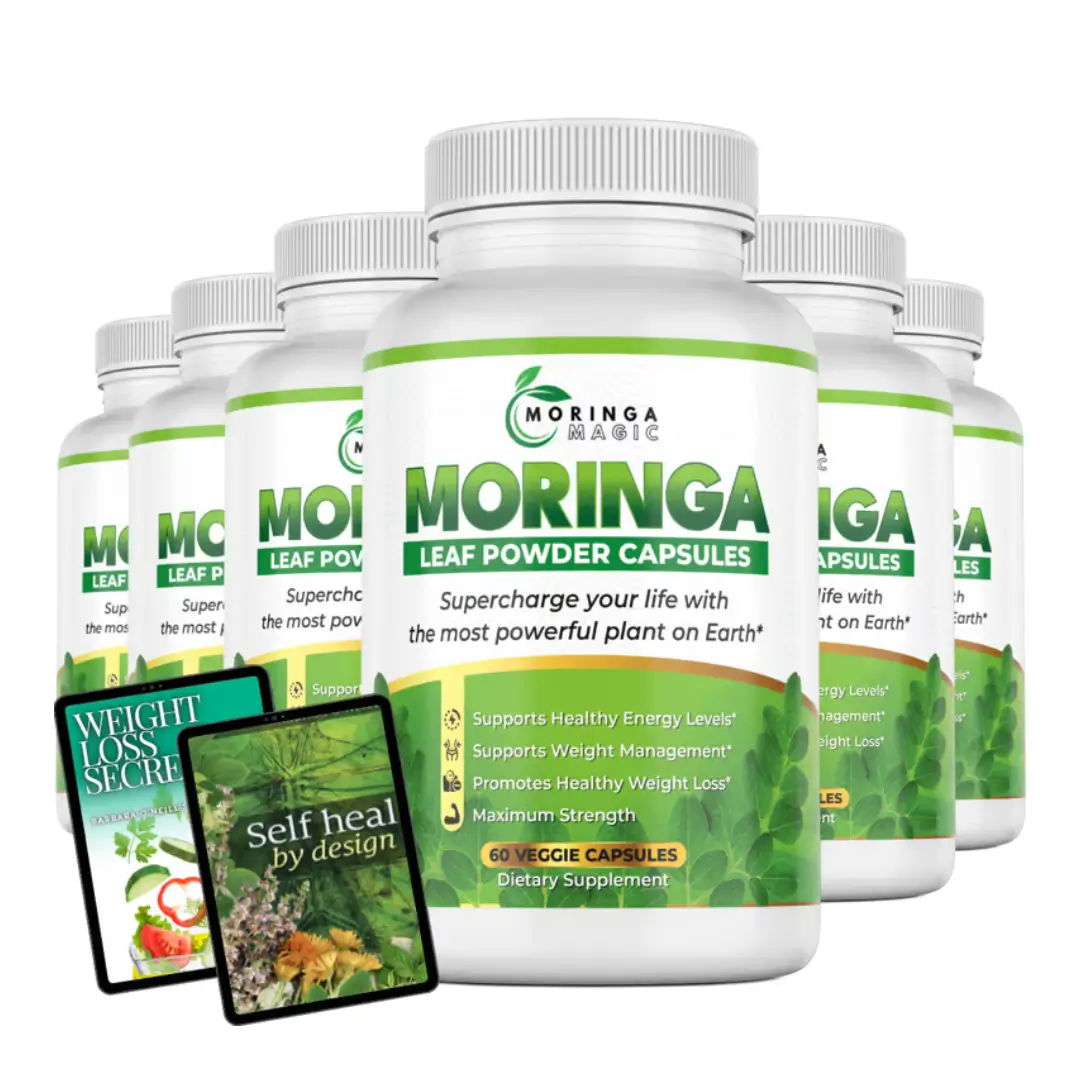Discover the health benefits of growing your culinary herbs! Our complete guide explains how fresh herbs like basil, mint, and rosemary can enhance flavor, save money, and boost well-being.
Grow and Enjoy the Best Culinary Herbs
Herbs are not just ingredients for flavor; they pack a punch of nutrition and medicinal properties that benefit your overall health. Culinary herbs are essential to many kitchens worldwide, elevating the taste of meals while delivering unique health benefits. Imagine growing these herbs at home, fresh and ready whenever needed. This guide will explore how to develop the best culinary herbs and their extraordinary health advantages.
What Are Culinary Herbs?
Defining Culinary Herbs
Culinary herbs are plants whose leaves, flowers, or stems are used to flavor food. Herbs are typically leafy greens, unlike spices, which come from seeds, bark, or roots. Some of the most common culinary herbs include basil, mint, parsley, and thyme, all of which bring a fresh aroma and depth of flavor to dishes.
Common Culinary Herbs You Should Know
Culinary herbs vary by region and cuisine, but a few popular ones span the globe. Basil is a must for Italian dishes, rosemary is perfect for Mediterranean cuisine, and mint is a staple in Middle Eastern meals. Each herb has its distinct profile and uses.
Here is a list of common culinary herbs:
- Basil
- Mint
- Parsley
- Rosemary
- Thyme
- Oregano
- Cilantro (Coriander)
- Dill
- Sage
- Chives
- Tarragon
- Lemongrass
- Bay Leaves
- Lavender
- Marjoram
These herbs are widely used in cooking and can be quickly grown at home.
Why Grow Your Culinary Herbs?
Growing your culinary herbs is more than just a hobby—it’s a rewarding practice that enhances your health, saves money, and brings a unique flavor to your meals. Let’s dive into why homegrown herbs are a fantastic addition to your lifestyle.
Freshness and Flavor in Culinary Herbs
Imagine stepping outside your door and snipping fresh herbs straight from your garden or kitchen windowsill. The difference in taste is remarkable. Store-bought herbs often travel long distances before making it to your kitchen, losing much of their natural essence. Dried herbs, in particular, can be a pale imitation of their fresh counterparts, with their flavor diminishing over time.
When you grow herbs at home, you capture the full burst of their aromatic oils, which are responsible for their vibrant taste. Freshly harvested basil, for example, has a bright, peppery flavor that transforms a simple tomato salad into a gourmet dish. The same goes for other fresh herbs like mint, rosemary, and thyme, which add depth and complexity. Homegrown herbs are your secret weapon for making everyday meals taste restaurant-quality.
Cost-Effectiveness of Culinary Herbs
Have you ever noticed how pricey fresh herbs can be at the grocery store? A small bundle of basil or cilantro can cost several dollars, especially out of season. And how many times have you bought herbs, only to use a few sprigs before the rest wilts in the fridge? Growing your herbs saves you from that expense and waste.
Once you invest in seeds or starter plants, herbs keep giving back. Many culinary herbs, like mint and oregano, are perennials, meaning they come back year after year with minimal effort. Even annual herbs like basil offer a bountiful supply if you harvest them correctly throughout the growing season. So, instead of constantly buying herbs, you’ll have a fresh, never-ending supply at your fingertips, making it a wise long-term investment.
Sustainable and Organic Gardening with Culinary Herbs

Growing your herbs allows you to take complete control of the process—from the soil they grow to how they’re cared for. You decide whether to grow them organically, avoiding synthetic pesticides and chemicals that may harm your health and the environment.
Sustainability is another considerable advantage. Cultivating your herbs reduces the carbon footprint of transporting produce across long distances. Plus, you’ll reduce plastic packaging waste often found with store-bought herbs. Herb gardens also help promote biodiversity in your backyard, attracting beneficial insects like bees and butterflies, which are vital for pollination.
Top Culinary Herbs to Grow and Their Health Benefits
Now that we’ve covered why growing your herbs is a wise choice. Let’s explore some of the most popular culinary herbs, their incredible health benefits, and how to cultivate them.
Basil
Health Benefits of Basil
Basil isn’t just a tasty addition to pasta dishes and salads—it’s also a powerhouse of nutrients. Rich in antioxidants, basil helps combat oxidative stress in the body, which can reduce the risk of chronic diseases. Its anti-inflammatory properties make it beneficial for managing conditions like arthritis. Some studies suggest that basil’s compounds may help alleviate anxiety and stress.
How to Grow Basil
Basil loves warm weather and thrives in full sunlight. Plant it in well-draining soil and water it regularly to keep the soil slightly moist. To encourage a fuller, bushier plant, pinch off the flower buds as they form. It redirects the plant’s energy into producing more leaves, which you’ll harvest for your dishes.
Mint
Health Benefits of Mint
Mint is known for its refreshing, cooling effect, but it offers much more than that. It aids digestion, reduces nausea, and can relieve headaches. The menthol in mint also has muscle-relaxing properties, making it an excellent natural remedy for tension and sore muscles. Additionally, mint’s natural antimicrobial properties can help freshen breath and keep oral bacteria at bay.
How to Grow Mint
Mint is incredibly easy to grow but can become invasive if left unchecked. It spreads quickly, so it’s best to plant mint in a pot to control its growth. Mint prefers partial shade and moist, well-drained soil. Keep it well-watered and reward you with lush, fragrant leaves throughout the growing season.
Parsley
Health Benefits of Parsley
Don’t underestimate parsley—this often-overlooked garnish is packed with nutrition. It’s high in vitamin C, which supports immune function, and vitamin K, which plays a key role in bone health. Parsley is also rich in antioxidants, which help protect your cells from damage. Its chlorophyll content makes it a natural breath freshener, perfect after a garlicky meal.
How to Grow Parsley
Parsley is a versatile herb that thrives in full sunlight and partial shade. It prefers moist, well-drained soil. To harvest, snip the outer leaves, which encourages new growth. Parsley is biennial, meaning it will return for a second growing season before going to seed.
Rosemary
Health Benefits of Rosemary
Rosemary is aromatic and rich in compounds that can enhance cognitive function. It’s traditionally been used to improve memory and concentration, and some studies suggest it may help prevent mental decline. Rosemary also contains anti-inflammatory compounds that can boost the immune system and improve circulation.
How to Grow Rosemary
Rosemary thrives in full sunlight and well-drained soil. Once established, it’s drought-tolerant, making it an excellent low-maintenance option for home gardeners. However, rosemary prefers drier conditions, so avoid overwatering. Harvest the sprigs by trimming them, and enjoy their fragrant needles in roasted vegetables or meats.
Thyme
Health Benefits of Thyme
Thyme is a potent herb with impressive antibacterial and antifungal properties. It’s often used to soothe coughs, sore throats, and respiratory infections. Packed with vitamins A and C, thyme supports a healthy immune system and can help your body fight off illnesses.
How to Grow Thyme
Thyme grows best in full sun and dry, well-drained soil. It’s a hardy herb can withstand drought conditions, making it perfect for low-maintenance gardens. Thyme grows well in containers and garden beds, and its tiny leaves are a flavorful addition to soups, stews, and marinades.
Oregano
Health Benefits of Oregano
Oregano is another herb that packs a punch in terms of health benefits. It’s rich in antioxidants, which help protect your body from oxidative stress. Oregano also has antimicrobial properties that can fight off harmful bacteria and viruses, and its anti-inflammatory effects may help support heart health.
How to Grow Oregano
Oregano is an easy-to-grow herb that thrives in full sunlight and well-drained soil. It grows rapidly and can be harvested throughout the growing season. Like mint, oregano can spread quickly, so consider growing it in a pot if space is limited.
Growing your herbs allows you to access fresh, flavorful ingredients and take advantage of their numerous health benefits. From boosting your immune system to supporting digestive health, culinary herbs offer more than just taste—they contribute to your overall well-being. Happy gardening!
Tips for Growing Culinary Herbs at Home
Best Growing Conditions
Culinary herbs generally thrive in well-drained soil with plenty of sunlight. Most herbs, such as basil, rosemary, and thyme, are native to Mediterranean climates, meaning they prefer dry, sunny environments. Ensure your herbs receive at least 6-8 hours of sunlight daily. They also flourish in good drainage pots, containers, or garden beds, preventing the roots from waterlogging. While some herbs are drought-tolerant once established, they still need regular watering during their early growth stages. Additionally, adding organic compost or well-balanced fertilizers to the soil ensures that your herbs have the nutrients to grow strong and flavorful.
Ideal Watering Practices
When it comes to watering culinary herbs, timing and moderation are key. Watering should be done in the early morning, allowing plants to absorb moisture before the day’s heat. It also helps reduce the risk of fungal growth when plants remain damp overnight. Be careful not to overwater your herbs—most prefer soil that dries out between waterings. For example, herbs like rosemary and thyme can tolerate drought and are best left to dry out between waterings, while parsley and basil may require more frequent hydration but still benefit from well-draining soil. A good rule of thumb is to check the top inch of soil; if it feels dry, it should be watered.
Common Problems and Solutions
Growing herbs at home presents challenges, particularly in controlling pests and diseases. Aphids, spider mites, and whiteflies are common pests that damage leaves and limit their development. Regular inspection will allow you to spot bugs early on. One approach to keeping pests under control is to use a homemade combination of dish soap, water, and a few drops of neem oil or organic insecticidal soap.
Herbs are also prone to fungal infections like powdery mildew, especially if they are overwatered or lack sufficient airflow. Ensuring proper spacing between plants, watering in the morning, and removing any affected leaves can help prevent this. Additionally, keeping the foliage dry while watering directly at the base of the plant reduces the risk of fungal diseases.
How to Harvest and Store Herbs
Best Time to Harvest
The best time to harvest your culinary herbs is when they are young and tender, particularly in the early morning when their essential oils are most concentrated. It ensures that you capture the freshest, most potent flavors. Be careful not to over-harvest, especially in the early stages of growth, as this can stress the plant. It’s essential to snip off only what you need and always cut above a leaf node to encourage new growth. For herbs like basil, regular harvesting prevents flowering, which can cause the leaves to lose flavor.
Methods of Drying and Storing
Drying herbs is a simple process that can significantly extend their shelf life while preserving their flavor. The traditional method is to tie small bunches of herbs and hang them upside down in a cool, dry, and well-ventilated space. This method works well for herbs like rosemary, thyme, and oregano. You can also use a dehydrator for faster results, especially in humid environments.
Once dried, store herbs in airtight containers away from direct sunlight and moisture to maintain their potency. For optimal flavor retention, use dried herbs within six months. You can also freeze herbs like basil and parsley by chopping them and placing them in ice cube trays with water or olive oil for future use.
Cooking with Fresh Herbs
Pairing Herbs with Dishes
Fresh herbs are incredibly versatile and can transform the flavor profile of any dish. Understanding which herbs complement different ingredients is essential for elevating your cooking. For instance, basil pairs beautifully with tomatoes and mozzarella, making it ideal for Italian dishes. Thyme works wonderfully with roasted chicken, adding an earthy, savory flavor. Mint adds a refreshing touch to lamb dishes and desserts, while parsley is a perfect garnish for soups and stews. The key is experimenting and finding which herbs work best with your preferred ingredients.
Tips for Enhancing Flavor
When maximizing the use of fresh herbs, time is crucial. To maintain the vivid flavors and fragrances of the spices, add them at the end of cooking. It is particularly true for delicate herbs that lose flavor when cooked for an extended period, such as cilantro, parsley, and basil. Heartier herbs, such as thyme and rosemary, can be added early in the cooking process to impart their rich, woodsy flavors to the food. Finely chop herbs before adding them to cold meals, such as salads or sauces, to release their vital oils and enhance flavor.
Another tip is to bruise the herbs slightly before adding them to the dish. This technique helps release the natural oils, making the flavors more pronounced. If you want an even richer taste, consider making herb-infused oils or butter, which can add more complexity to your cooking.
Growing and cooking with fresh culinary herbs offers many benefits, from healthier meals to a more sustainable lifestyle. Whether a novice or an experienced gardener, these simple tips can help you grow vibrant, flavorful herbs and make the most of them in the kitchen.
Conclusion on Culinary Herbs
Growing culinary herbs is a quick and easy way to improve your cooking and well-being. Fresh herbs add flavor to food and are a great source of vitamins, antioxidants, and other health-promoting ingredients. Growing your herbs gives you access to fresh, pesticide-free ingredients that you can use for any occasion, whether creating gourmet dinners or looking for all-natural cures for everyday ailments.
Cultivating herbs such as basil, rosemary, mint, and thyme in windowsill pots or a garden is simple. They provide a steady supply all through the growing season. Caring for your plants, seeing them grow, and utilizing them in food are enormous benefits. You will also increase the flavor and health of your meals while cutting down on waste and making wise financial decisions.
So why hold off?
Start cultivating your culinary herbs to enjoy their flavor, happiness, and health advantages. Your wallet, taste buds, and body will all appreciate it!
FAQs on Culinary Herbs
Q. What are the health benefits of culinary herbs?
Culinary herbs offer many health benefits due to their high concentrations of vitamins, antioxidants, and essential oils. Many herbs, such as basil, rosemary, and oregano, have anti-inflammatory and antimicrobial properties, which can help fight infections and reduce inflammation. Herbs like parsley and cilantro are rich in vitamin C, supporting immune function, while thyme and rosemary are known for their positive effects on respiratory health. In addition, culinary herbs can aid digestion, boost cognitive function, and promote heart health.
Q. What are the best herbs to grow for cooking?
Some of the best herbs to grow for cooking include:
- Basil: Perfect for Italian dishes like pasta and pizza.
- Mint: Great for teas, desserts, and adding freshness to salads.
- Parsley: A versatile garnish and flavor enhancer for soups and sauces.
- Thyme: Ideal for roasting meats and vegetables and adding depth to soups.
- Rosemary: Pairs beautifully with roasted meats and vegetables.
- Oregano: A staple in Mediterranean cuisine, perfect for pizzas and sauces.
- Cilantro: Essential for salsas, guacamole, and many Asian and Latin American dishes.
These herbs are easy to grow and enhance a wide variety of dishes.
Q. Which herb has the most health benefits?
While many herbs have health benefits, oregano is one of the most nutrient-dense. Oregano is rich in antioxidants, mainly phenolic compounds, which help combat oxidative stress in the body. It also has potent antimicrobial and anti-inflammatory properties. Oregano is often used to boost immunity, support heart health, and fight infections. Additionally, it contains vitamins A, C, and K, contributing to overall wellness.
Q. What is a culinary herb?
A culinary herb is any plant used primarily for its aromatic leaves or stems to flavor food. These herbs enhance the taste of dishes, offering unique flavors ranging from sweet to savory. Unlike spices derived from seeds, roots, or bark, culinary herbs are usually harvested fresh or dried from leafy plants. Popular culinary herbs include basil, parsley, mint, thyme, and rosemary.
Read more articles about Health & Wellness.
You might like to read:
How Eggs Can Transform Your Wellness Journey: Discover the Secrets to a Healthier Lifestyle!




